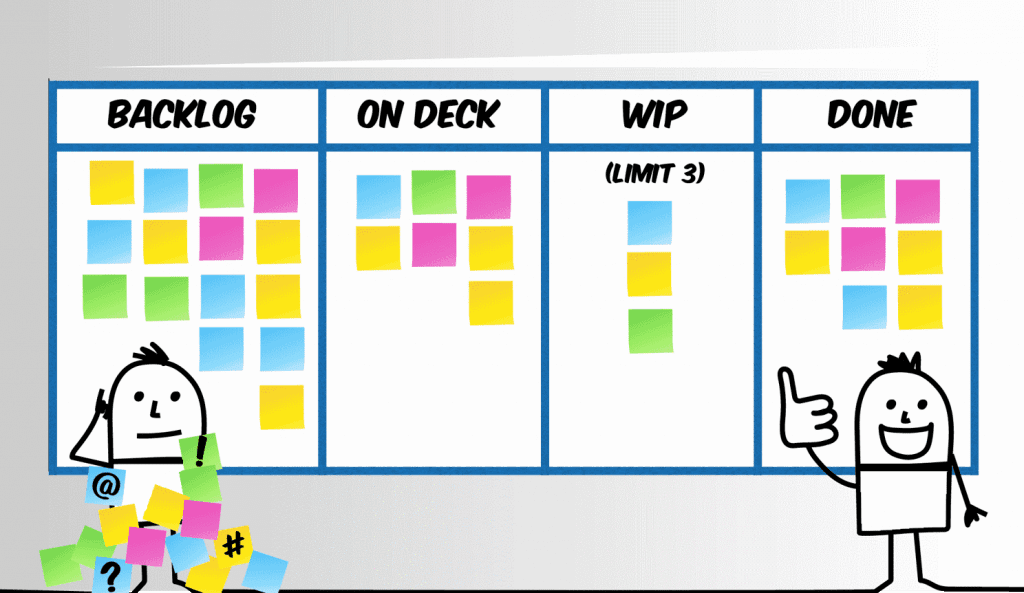
We’re a month into 2020 – are your New Year’s resolutions still holding fast or are they already beginning to fade away?
Goal achievement is tremendously difficult for most people – studies show that while about 60% of us make New Year’s resolutions, only about 8% of us achieve them.
In fact, such outcomes are less about the resolutions or goals themselves, and more about the way we go about attaining them. Any organization of any size has a goal-setting process, but far fewer have a goal attainment process, and that’s where feelings of torture can set in.
There are many tools to set, modify and measure goals, but when it comes to actually getting down to work or sticking to a task, the truth is that willpower, pep talks, rewards and punishments are just not enough.
At Pollinate, we believe that anyone can overcome the challenges of continuous change by building an agile mindset and skill set. We give people a new way to think about how to get things done plus practical techniques for true effectiveness to reliably deliver the results that matter most.
4 tips to keep goal achievement on track:
1. Write down some goals! And talk about them.
Research shows that people more than double their rate of goal achievement if they write their goals down.
Often, organizations encourage people to write SMART goals. Detailing goals can be helpful when the goal is near in time and the complexity of getting it done is relatively lower – i.e., there aren’t demands competing for the same time frame, most of the goal can be done independently, the environment isn’t likely to change.
Studies clearly show that humans have cognitive biases (our own subjective reality) that make us terrible at forecasting, even when we try to take those biases into account. Breaking down tasks into bite-sized “do-right-now” pieces enables us to be better estimators and adjust timelines and learn when tasks take longer.
At Pollinate, when it’s time to get specific, we get specific. You’ll see more on that below. And we also recommend that goals be a blend of specific commitments as well, including goals that are more agile or developmental in nature. This is not to suggest we can let ourselves off the hook by being *agile* with critical deadlines and commitments! It is to suggest that we might not be able to get detailed when our intentions are more complex – i.e., I want to gain a new skill set, start a new business relationship or determine how to get a handle on anxiety.
Complexity means we may have to take an agile approach by keeping that intention in focus and finding the footholds and opportunities to move forward as you go.
So we can have goals that are SMART, like this:
- I will find 3 new customers and land first sales by the third quarter of this year.
- I’ll run my first 5K race all the way – without walking – before December 31st.
- We will implement the new internet security system on October 20 for all of the core staff and ensure training has taken place by October 30.
And we can have goals that seem a bit more general, but are still actionable, such as:
- I want to be more confident and skillful in the negotiations and partnership discussions I have coming up over the fall.
- We will find and implement a wellness approach that works for the organization.
- The team needs increased understanding and the ability to talk about how business models work.
Regardless of the form that is required or feels appropriate, written goals are a must. A Pollinate collaborator, Dr. Seb Paquet, introduced us to the term “intent casting.” Words written down are powerful; words spoken aloud are also powerful. Sharing our goals and intentions makes them more real, provides a good second check on how clear your intention is and makes it even more likely you’ll meet the goal.
2. Break down your goals into tasks (and don’t confuse goals and tasks)
Once the intent is written down (and hopefully spoken aloud), it’s helpful to start breaking down a goal into tasks. Don’t worry about organizing the tasks at first – that’s the next step.
Our tasks can actually become an excellent way of organizing, gamifying and paving our way to goal attainment. However, to be a real help to us, tasks have to meet certain “brain science” requirements.
These five criteria will help you create an effective system for racking up completed tasks:
- Make sure the task is concrete (defined well enough so you can grab it and do it without thinking about it a lot more). Switching between pondering and doing things costs more time than you think.
- Use the correct cortex for processing tasks – this is the big visual processor at the back of your brain, not your much smaller working memory. Don’t try to remember all of your tasks! Write/type tasks in a visual system that you trust to keep them close (more on that in step 3).
- Ensure tasks are cue- and purpose-driven (focused on action and on what matters most right now).
- Cull & close: Sometimes tasks become irrelevant or the goal changes. Get rid of those tasks or they will become zombies and eat your brain.
- Assess capacity (be selective about the number of tasks you take on because capacity is limited – for all of us, even you).
3. Build a “doing” system – let your tasks flow
A Kanban is a system to manage the logistical activities of a project, plan or process, and it works well as a concept for managing tasks toward a goal. At Pollinate we use Trello™ as a Kanban system to save post-it notes!
Kanban means “card” and comes from the agile software development world. The idea is to start with all of the tasks you have in a big “backlog.” These are all the things you can think of at the outset that need to get done.
A Kanban board might look like this:

The “on-deck” column helps us parse a bunch of next step tasks that have to be done. It’s a kind of triage area for tasks coming into focus from the big list in the backlog (which you can keep adding to).
From here we have to be disciplined. You have to limit Work in Progress (WIP) to a few things – we usually say up to three, but the idea is to get a few tasks into WIP and move them to “Done” quickly, dump the next small batch into WIP, and repeat.
4. Finally, focus on the process and not the plan
Many productivity systems place importance on the actual plan of action, instead of emphasizing a flexible, adaptive process of action. Focusing on the plan forces the individual or team to go one step at a time and increases the risk of running into constant roadblocks (sometimes not even accomplishing the desired outcome because the plan becomes a roadblock in and of itself).
Agile productivity systems emphasize the process. Being agile means you head right into the work and are able to move quickly and easily. The process is iterative, allowing for revisions and adjustments along the way. Taking action becomes the top priority, with less time spent on talking and thinking about tasks, and more time spent on actually getting things done.
“There is nothing like a concrete life plan to weigh you down… if you always have one eye on some future goal, you stop paying attention to the job at hand, miss opportunities that might arise, and stay fixedly on one path.” — Indra Nooyi, Business Executive and former CEO of PepsiCo



